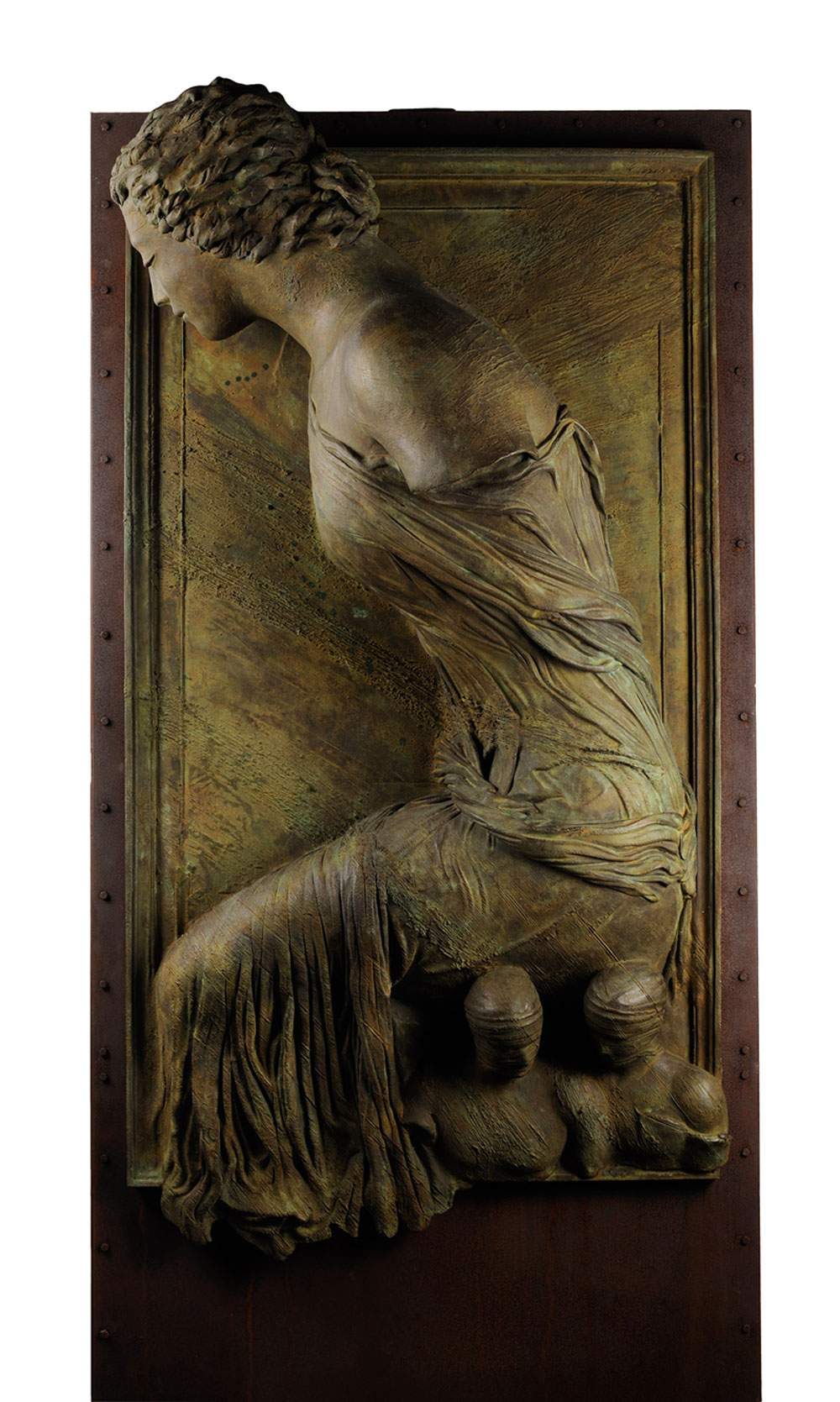Pisa, Museo delle Sinopie reopens and displays three sculptures by Mitoraj
The Museo delle Sinopie in Pisa reopened to the public Aug. 1 after being closed for maintenance work, and to mark the reopening, it is hosting three works by sculptor Igor Mitoraj untilJan. 11, 2021. The museum venue holds a unique collection: the preparatory drawings for the frescoes of the Pisa Cemetery.
The President of the Opera della Primaziale Pisana, Pierfrancesco Pacini, in agreement with the Deputation, strongly wanted the exhibition of the three works by the famous sculptor to create an opportunity to enhance the museum and further attract tourism to Pisa.
Mitoraj’s art returns to a dialogue with the monuments and museums of Piazza dei Miracoli: a dialogue that had already begun in 2014 with the major exhibition Angeli, the last one created when the artist was still alive, and continued with the placement of the sculpture Angelo Caduto at the foot of the Leaning Tower.
Three bronze panels, representing the same themes Mitoraj developed for the portals of Santa Maria degli Angeli in Rome, will be on display inside the Museo delle Sinopie. One panel depicts Christ, carrying the cross carved directly into his body, and the other two depict the scene of theAnnunciation, with a young Madonna with her head bowed before theAngel of the Lord unfolding her wings.
The collection of the Museo delle Sinopie came to light following a disastrous event during the bombing of World War II: fire had broken out in the Cemetery. This necessitated the detachment of the frescoes from the plaster in order to recover the vast portions not destroyed by the fire, and to begin their restoration. It was precisely the ’tearing’ of the pictorial film that allowed the discovery of the sinopites, the concealed part of the fresco that was removed from the walls of the Cemetery and since 1979 housed in the current museum.
Destined to remain concealed beneath the completed work, the sinopia represents the artist’s only valuable graphic record, as specimens of drawings on paper or parchment that have come down to us since the Middle Ages are very rare. The sinopia is the first stage in the creation of the fresco, it is the drawing traced on the first layer of plaster by spreading with a brush a red pigment, Sinòpe earth, mixed with water: it is with this compound that the masters engaged in narrating the stories of the Old and New Testament on the walls of the Pisan Camposanto fixed their ideas, traced the scenes, outlined the characters and details giving them body with chiaroscuro.
The sinopites preserved in this museum thus represent the preparatory drawings for the vast pictorial compositions executed in fresco on the walls of the Cemetery. Here one can admire and compare the style of Buonamico Buffalmacco, the author of the famous Triumph of Death, Taddeo Gaddi, and Pietro di Puccio da Orvieto, who began the cycle depicting the Stories of the Old Testament, completed by Benozzo Gozzoli: the largest cycle of 14th- and 15th-century graphics known to date.
In addition to the sinopites, the Museum collects the engravings of Carlo Lasinio (1759-1838) the only complete documentation of what were once the wall paintings of the Pisan Camposanto.
Pictured: Igor Mitoraj, Madonna (2006, bronze)
 |
| Pisa, Museo delle Sinopie reopens and displays three sculptures by Mitoraj |
Warning: the translation into English of the original Italian article was created using automatic tools. We undertake to review all articles, but we do not guarantee the total absence of inaccuracies in the translation due to the program. You can find the original by clicking on the ITA button. If you find any mistake,please contact us.





























